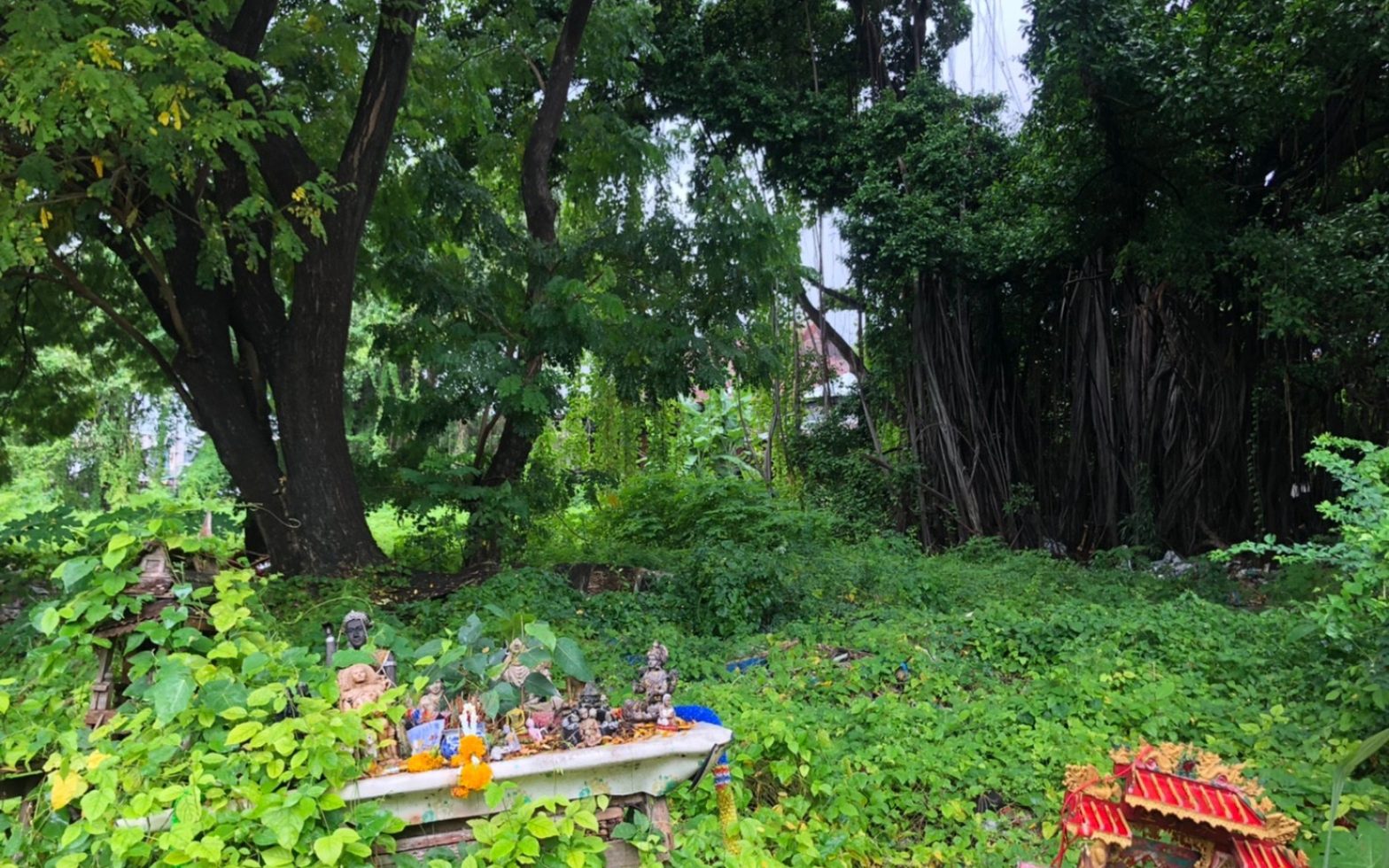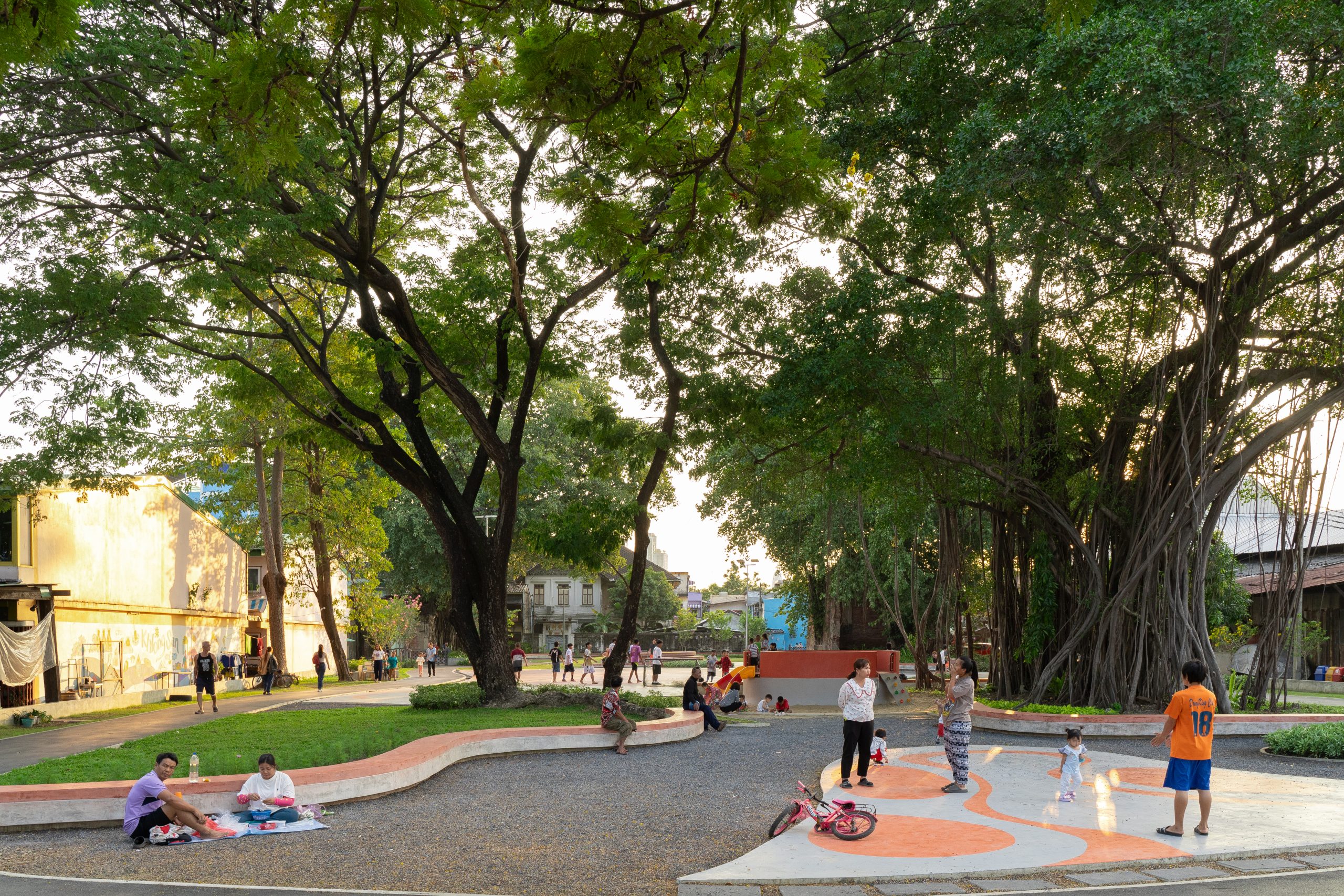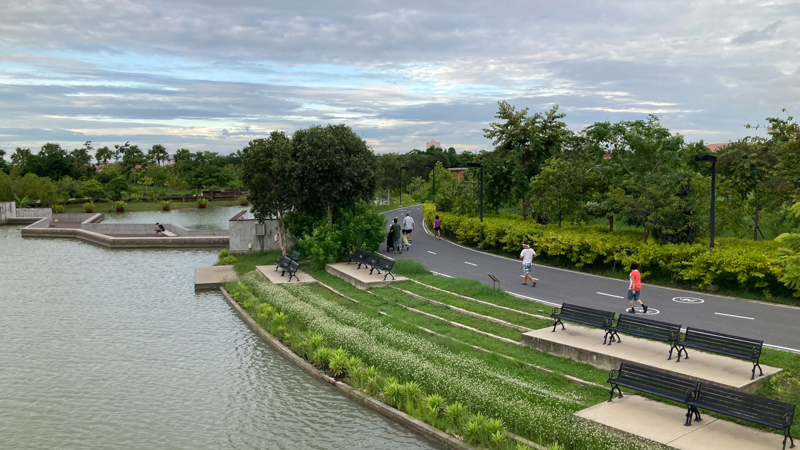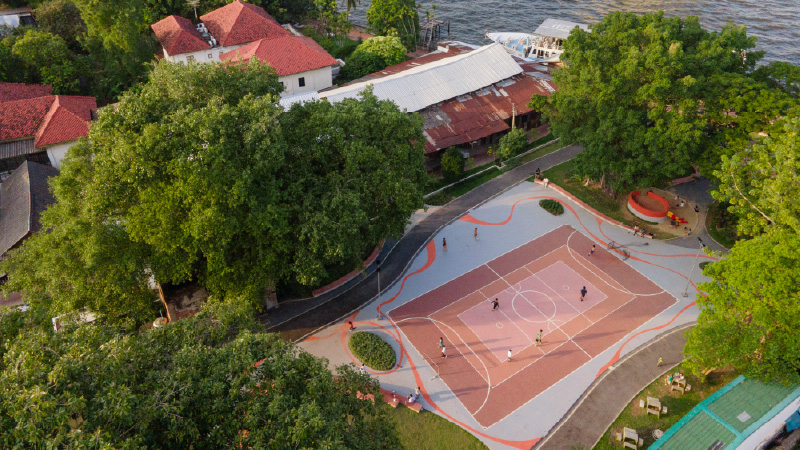Weaven life, Weaven Place
Suan San transforms private land into a public green sanctuary that ensures green spaces are within reach for everyone. The design preserves mature trees and heritage elements while weaving modern pathways. This garden is the result of participatory design, where the community shaped the space together. It’s not just a park but a living story of time, nature, and shared memories.
Project Information ↘︎
Client & Developer
Bangkok Metropolitan Administration (BMA)
Architect
-
Status
Completed
Landscape Area
3,894 sq.m.
Year
2025
Award
-
Design Director
Yossapon Boonsom
Landscape Architect
Tarntip Tantprasert
Pluek Jongphichavorakul
Natasha Bell Garsia
Poohlawat Sangduean
Construction Manager
Anongnard Jungmongkolsawat
Horticulturist
Supaluk Paorik
Pornpun Chairat
Sirinthon Sumangsa
Collaborator
Photographer: Nawin Deangnul
Graphic Designer : Vipulapas Puapolthep
Participatory Design: We!park, Sonjai House, Big trees, National Health Commission Office, Thai Health Promotion Foundation (ThaiHealth), Urban Design and Development Center (UddC), Collaborative Network of Schools of Architecture (Sripatum University, Bansomdejchaopraya Rajabhat University and Dhonburi Rajabhat University), Love Kadeejeen-Khlongsan,Youngthon, Deep root cafe, Chang Nak Sapan Yao Community, Suan Somdet Ya Community, Laem Thong Salt.Ltd
Bangkok faces a significant challenge in providing adequate green space for its residents. With a mere 7.49 square meters of green space per person, the city falls well below the World Health Organization’s recommended standard of 9 square meters. Recognizing this urgent need, the Bangkok Metropolitan Administration (BMA) has set an ambitious goal: to increase the per capita green space to 10 square meters by 2030.
A cornerstone of this vision is the “15-Minute Park” initiative – a strategic network of small public spaces designed to be accessible within a 15-minute walk or 800 meters. This initiative directly addresses the current reality where Bangkokians often spend 45 minutes to an hour commuting to a park. Our approach to expanding green spaces is intrinsically linked with enhancing accessibility, fostering community ownership, and ensuring these local parks become vibrant, sustainable hubs, rather than neglected relics of urban planning.
Suan San Pocket Park is a multi-sector collaboration transforming abandoned private space into an inclusive public green sanctuary for all
Suan San,” a 3,894-square-meter pocket park nestled in the historic, multicultural Klong San-Tha Din Daeng community, stands as a testament to this transformative vision. This area, with its rich 200-year history along the Chao Phraya River, is densely populated and ripe for renewal. Suan San is a shining example of multi-sector collaboration, initiated by a private entity’s generous 10-year land donation for public use, with the BMA leading its development. Through a deep commitment to participatory design with the local community, this formerly derelict space has been reimagined as a public park that genuinely serves its users and is safeguarded against the fate of past abandoned sites.
The inception of “Suan San” was driven by a clear objective: to develop a sustainable public space. Our process extended far beyond conventional site analysis and design. We orchestrated an inclusive participatory process, engaging the local community, government agencies, private sector, academic institutions, professional organizations, and civil society groups. This collaboration facilitated stimulating activities, allowing residents to experience the space, providing invaluable feedback, and yielding data on community usage.
This iterative approach ensured the park truly resonates with the neighborhood’s needs and stands as a public space for everyone. Paramount to our design were safety enhancements, including comprehensive lighting and an open, uncluttered landscape to deter illicit activities. Emphasis was placed on adaptive management strategies to guarantee the park’s long-term viability and prevent deterioration.


The Three Connectors of Suan San
At the heart of “Suan San’s” design is the concept of “San” (สาน), a Thai word meaning “to weave” or “to connect.” This principle guided our efforts to knit the community together within the space through diverse, need-based activities, establishing the park as a vital neighborhood learning center that bridges its rich past with the present. The park embodies “three connectors” or “Sam San” as following:
Weaving Relationships
Our goal was to cultivate connections among community members by creating a multi-access space that unites all. The original site’s desolate nature, limited access points, and lack of integration with its surroundings posed a significant challenge. Our design meticulously considered accessibility, strategically defining entry and exit points that seamlessly link with surrounding residences, thereby fostering interaction. Suan San was conceived with multiple entryways, allowing the space to blend effortlessly with its context and reducing visual barriers. Walls were innovatively designed to double as seating, subtly delineating boundaries while their inviting aesthetic encourages engagement and fosters a welcoming atmosphere for all.
Weaving Past and Present
We were committed to preserving the historical integrity of the original area while extending its significance through a design that narrates its past for contemporary understanding. Beyond its function as a public park, it serves as an invaluable learning center for the Klong San community’s rich history.
Preserving Existing Trees: The inherent natural value of the site was a core tenet. Our new landscape plan and circulation paths were meticulously designed around existing trees, ensuring their preservation and prominence, while new plant species were thoughtfully introduced to enhance the existing flora.
Maintaining the Heritage Building: A significant abandoned brick building on the original site was not demolished but rather integrated into the park’s fabric. This old structure has been revitalized as a dedicated learning space for Klong San’s historical narrative.
Upholding Unique Characteristics: The site’s original material palette, notably the pervasive traditional bricks, informed our material selection. We purposefully chose design elements in red-orange tones to honor and perpetuate these distinctive characteristics throughout the project.
Physical Activity Space: This includes a jogging track, exercise area, and an outdoor sports field, all meticulously designed with standardized dimensions and materials for optimal user comfort and safety. A playground, nestled beneath the protective canopy of a preserved large banyan tree, offers both recreational and educational opportunities for children.
Mental Well-being and Eco-learning Space: This area features a herbal garden, providing a valuable space for community members with limited personal gardens to cultivate plants. It also functions as an interactive learning environment for children to discover plant life. The Banyan Yard, a serene gravel patio located by the Chao Phraya River beneath the shade of a venerable tree, serves as a passive space for relaxation, where the calming green and blue surroundings offer a therapeutic respite.
Community Co-creation Space: A large, open area has been designed with flexible usage in mind, accommodating a wide array of activities. This includes spaces for social gatherings, “music in the park” events, community art exhibitions, general exhibitions, and even an innovative outdoor classroom for nature education.
From its origins as a derelict garbage dump, Suan San has been remarkably transformed into a vibrant green public space. It actively fosters social interaction and serves as a dynamic activity hub, strengthening bonds within the neighborhood and its surrounding areas. This is all achieved within a tranquil riverside setting, under the cooling embrace of mature trees. Suan San stands as a pioneering pilot project for the 15-Minute Park initiative, setting a benchmark for development methodologies, design objectives, and sustainable maintenance practices. It serves as a powerful prototype for future community parks across Thailand.
Crucially, Suan San possesses the inherent potential to function as a Park Connector, seamlessly integrating with larger green infrastructure in the vicinity, such as the Chao Phraya Sky Park, the Princess Mother Memorial Park, and the green spaces within Kuan Yim Shrine. Its network extends further, linking to smaller green nodes including government buildings, private communal areas, school and temple grounds, and tree-lined streets. Despite its modest size as a community park, Suan San has become a vital component of Bangkok’s urban green space network, connecting neighborhoods and significantly contributing to the city’s journey towards becoming a truly green metropolis.


